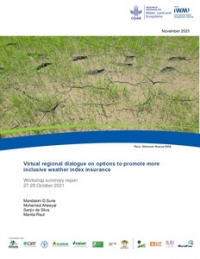The project has two primary aims: • Green and Grey infrastructure: to determine whether explicit inclusion of natural infrastructure would result in smarter water resources planning. This is done through 1. Evaluation of all natural and built infrastructure ; 2. Functional Assessment; 3. Needs Assessment; and 4. Combined water resource and hydroecological modeling. The research is being conducted in the Mekong, Volta, Ganges and Zambezi river basins. The research conducted will contribute to improved conceptual understanding of the role of natural infrastructure in water resource management, moving beyond assumptions, to quantify the real benefits provided and the consequences of considering portfolios of natural and built infrastructure. • Wetlands for people: to support IWMIs work on wetlands: 1. Improved understanding of changes in wetland functions and their impact on ecosystem services, livelihoods and water productivity resulting from agricultural activities in and upstream of wetlands 2. Increased capacity of various stakeholders (development and conservation, local, regional, and international) to understand and manage wetland ecosystems for the benefit of the poor and the environment. Specifically this part of the project supports IWMIs contribution to the Ramsar Convention and activities to fulfil its obligations as an International Organization Partner (IOP) of the convention. This includes funds to enable staff to participate in activities of the Science and Technical Review Panel (STRP) of the convention. The project contributes to WLE flagship 5 – managing resource variability and competing use (MRV) and the activity cluster 5.2 Resource allocation and sharing of benefits for all.
menu





/index.jpg?itok=EzuBHOXY&c=feafd7f5ab7d60c363652d23929d0aee)









